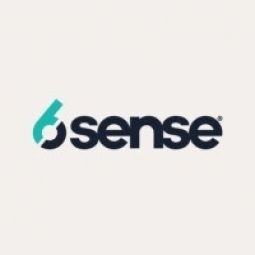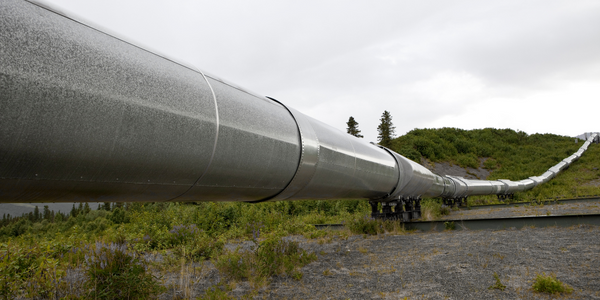Technology Category
- Application Infrastructure & Middleware - Database Management & Storage
- Infrastructure as a Service (IaaS) - Cloud Databases
Applicable Industries
- Buildings
- Oil & Gas
Applicable Functions
- Product Research & Development
- Sales & Marketing
Use Cases
- Building Automation & Control
- Inventory Management
Services
- Training
About The Customer
Qualtrics is a leading experience management platform that has been in operation for over 20 years. Founded by Ryan Smith and his father, Scott, the company started as an easy-to-use online survey tool for businesses and universities. Today, with 5,000 employees and 16,000 customers, Qualtrics’ signature Experience Management (XM) platform is the No. 1 solution to enhance customer, employee, product, and brand experiences. Between 2018 and 2021, Qualtrics was acquired by multinational software corporation SAP, became a publicly traded company, and exceeded $1 billion in revenue. The company is known for its continuous scaling and finding efficiencies.
The Challenge
Qualtrics, a leading experience management platform, has experienced exponential growth over the past two decades. With 5,000 employees and 16,000 customers, the company has become a go-to solution for enhancing customer, employee, product, and brand experiences. However, with this growth came challenges. To continue expanding their customer base with high-impact accounts, Qualtrics needed to use targeted and reproducible approaches. The company was looking for ways to eliminate guesswork and confidently engage the right accounts at the right time. In 2019, they turned to 6sense to scale up. The challenge was to optimize their LinkedIn advertising strategy, suppress weak accounts, and incubate stronger ones.
The Solution
Qualtrics implemented several strategies with 6sense to address their challenges. They used keyword intent data to focus on specific concerns of target accounts and predictive models to identify ideal customer profiles for multiple product lines. The 6sense API was used on their website to tie anonymous research to specific accounts and for website personalization. Contact enrichment was used to quickly identify key decision-makers within high-intent accounts. Personalized LinkedIn ads were created based on 6sense keyword research and buying stage data. Targeted sales outreach was conducted to 6sense Qualified Accounts (6QAs), considered in-market and an ideal fit. Weak fit suppression models were used to improve efficiency on the most profitable channels. 6sense-led Sales team training was conducted to empower the team to get the most out of the new tools.
Operational Impact
Quantitative Benefit

Case Study missing?
Start adding your own!
Register with your work email and create a new case study profile for your business.
Related Case Studies.

Case Study
Taking Oil and Gas Exploration to the Next Level
DownUnder GeoSolutions (DUG) wanted to increase computing performance by 5 to 10 times to improve seismic processing. The solution must build on current architecture software investments without sacrificing existing software and scale computing without scaling IT infrastructure costs.

Case Study
Remote Wellhead Monitoring
Each wellhead was equipped with various sensors and meters that needed to be monitored and controlled from a central HMI, often miles away from the assets in the field. Redundant solar and wind generators were installed at each wellhead to support the electrical needs of the pumpstations, temperature meters, cameras, and cellular modules. In addition to asset management and remote control capabilities, data logging for remote surveillance and alarm notifications was a key demand from the customer. Terra Ferma’s solution needed to be power efficient, reliable, and capable of supporting high-bandwidth data-feeds. They needed a multi-link cellular connection to a central server that sustained reliable and redundant monitoring and control of flow meters, temperature sensors, power supply, and event-logging; including video and image files. This open-standard network needed to interface with the existing SCADA and proprietary network management software.

Case Study
Energy Saving & Power Monitoring System
Recently a university in Taiwan was experiencing dramatic power usage increases due to its growing number of campus buildings and students. Aiming to analyze their power consumption and increase their power efficiency across 52 buildings, the university wanted to build a power management system utilizing web-based hardware and software. With these goals in mind, they contacted Advantech to help them develop their system and provide them with the means to save energy in the years to come.

Case Study
Refinery Saves Over $700,000 with Smart Wireless
One of the largest petroleum refineries in the world is equipped to refine various types of crude oil and manufacture various grades of fuel from motor gasoline to Aviation Turbine Fuel. Due to wear and tear, eight hydrogen valves in each refinery were leaking, and each cost $1800 per ton of hydrogen vented. The plant also had leakage on nearly 30 flare control hydrocarbon valves. The refinery wanted a continuous, online monitoring system that could catch leaks early, minimize hydrogen and hydrocarbon production losses, and improve safety for maintenance.









